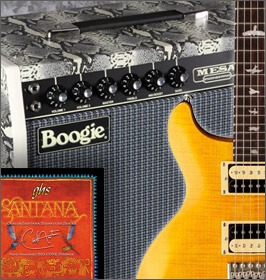Santana’s Latin Twist
While it is not clear what the origins were of Santana’s fabled Latin percussion sound — considering they were originally primarily a blues band — there were undoubtedly multiple factors at work.
One was the well-known habit Carlos and Gregg had of hanging out in San Francisco’s Aquatic Park, where conga players and other percussionists would jam at length. Second is, of course, the immersion of a young Carlos Santana into Mariachi and other Latin music, via his father and the culture in his native Mexico.
But quite possibly the biggest key was the inclusion of Jose Chepito Areas in the band. Other groups of the time featured conga players: Gabor Szabo, a guitarist/songwriter who Santana admired (and whose “Gypsy Queen” is actually the second half of “Black Magic Woman”); Crosby, Stills and Nash; even Jimi Hendrix’s Woodstock line-up included a conguero.
However, the conga is primarily a rhythm instrument, which blends well into a number of musical styles. The timbales, on the other hand, are considered the lead percussion instrument in Latin music. Chepito’s fiery playing of timbales — including cowbells and other percussion accessories — and even doubling up on Congas with Michael Carabello, was critical in adding to Santana the heavy Latin-influenced sound that set them apart from the crowd.
Emergence of Carlos Santana, the Legend
Before Santana achieved prominence, there were various incarnations of the band. But the group on the first two albums is the one considered (for obvious reasons) to be the original line-up: Carlos Santana (guitar, vocals), Gregg Rolie (keyboards, vocals), Dave Brown (bass), Michael Shrieve (drums), Michael Carabello (congas), Jose Chepito Areas (timbales, congas).
After the first two albums were released, however, the band went through a large number of permutations, and, until the 1999 release of Supernatural, never reached the popularity of those first two albums. (It should be mentioned that although the band’s album sales were lower, their renown as a touring act continued unabated.)
But during the next three decades, an interesting thing happened. While the band changed, Carlos Santana’s reputation as an individual continued to grow. Many musicians — and some hardcore fans — may be able to name the band members on a certain album or song, but most simply know of Carlos Santana. In the public’s mind, Santana (the band), was synonymous with Santana, the man.
Santana, Reinvented
In the late ’90s, record company legend Clive Davis orchestrated the revival of Carlos’s career by suggesting, and helping him to put together, a melange of players, singers, and writers, to create the award-winning album Supernatural. For the album, Carlos co-wrote and performed with Rob Thomas (Matchbox 20), Lauryn Hill, Dave Matthews, Wyclef Jean, Eric Clapton, and others. It was an undisputed smash.
Driven by a wealth of stellar material, and the undeniable cachet of Santana’s name, the album charted number one in multiple countries, launched a number of memorable singles (“Smooth,” “Maria Maria,” “Corazon Espinado”), and revived Carlos’s flagging career. Rumor has it that, before embarking on the project, a couple of the younger artists didn’t even know who Carlos Santana was. They certainly know now!
As a result of the re-invigoration of his career, Carlos has experienced a renaissance of his own. Besides a number of other albums, he has launched a clothing line (who would have thought women would be wearing “Carlos by Carlos Santana” strappy sandals?), a set of fragrances, a restaurant chain, become even more involved in charity, and collaborated with other artists on their projects.
What’s next? Who knows. But whatever happens, it’s clear that Carlos Santana has forever become an icon in the musical landscape, as well as being immortalized in popular culture.


